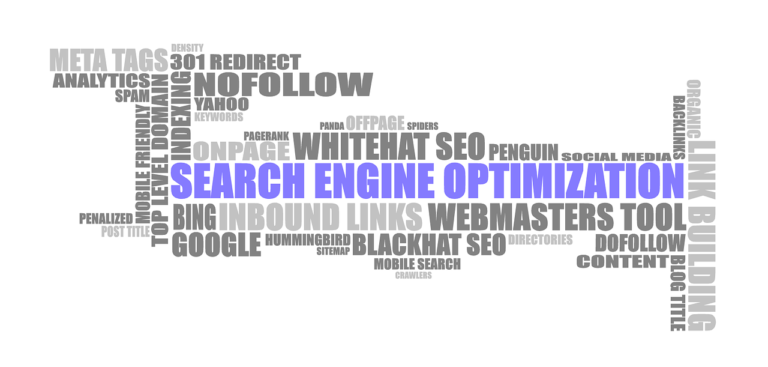How Can I Optimize Anchor Text For Link Building?
Are you looking to enhance your link building strategy? If so, optimizing anchor text is a crucial element that you shouldn’t overlook. With the right anchor text, you can improve the visibility and relevance of your website, ultimately driving more traffic and boosting your search engine rankings. In this article, we will explore practical tips and techniques to help you optimize anchor text effectively, allowing you to maximize the benefits of your link building efforts.
Learn moreabout how to build links for your business..
Choose Relevant Anchor Text
Understand the Importance of Anchor Text
When it comes to optimizing anchor text for link building, it is crucial to understand its significance. Anchor text serves as a clickable link that directs users to another web page. It not only helps users navigate through your website but also provides search engines with valuable information about the linked page’s content. By choosing relevant and descriptive anchor text, you can enhance user experience, boost search engine rankings, and improve overall website visibility.
Select Anchor Text That Matches Content
To optimize anchor text effectively, it is essential to select text that accurately reflects the content of the linked page. The anchor text should provide users with a clear indication of what they can expect when they click on the link. For example, if your article is about “10 Tips for Effective Time Management,” the anchor text could be “time management tips” or “learn effective time management techniques.” By choosing anchor text that matches the content, you are increasing the likelihood of attracting relevant visitors and improving the overall relevance and credibility of your website.
Avoid Using Generic Anchor Text
While it is important to choose anchor text that matches the content, it is equally important to avoid using generic anchor text. Generic anchor text, such as “click here” or “learn more,” provides little context about the linked page’s content. Using such generic phrases can make it difficult for search engines to understand the relevance and context of the link. Instead, opt for more descriptive and specific anchor text that accurately represents the content of the linked page. This will not only improve search engine optimization but also enhance the user experience by providing clear expectations about the destination of the link.
Include Target Keywords
Identify Relevant Keywords
Keywords play a crucial role in anchor text optimization. Before incorporating target keywords into your anchor text, it is important to identify relevant keywords that closely align with your content. Conduct keyword research to understand the phrases and terms users are searching for in relation to your content. By identifying relevant keywords, you can ensure that your anchor text resonates with your target audience and increases the likelihood of attracting organic traffic.
Incorporate Target Keywords in Anchor Text
Once you have identified relevant keywords, it is time to incorporate them into your anchor text. By strategically placing target keywords in your anchor text, you can signal to search engines the relevance and context of the linked page. However, it is important to maintain a natural keyword density and avoid over-optimization. Overuse of keywords, also known as keyword stuffing, can negatively impact your website’s search engine rankings and user experience. Aim for a balanced and natural placement of target keywords within your anchor text.
Maintain a Natural Keyword Density
While it is important to incorporate target keywords into your anchor text, it is equally important to maintain a natural keyword density. Keyword density refers to the number of times a keyword is used in relation to the total number of words on a page. Search engines look for a reasonable keyword density to determine the relevance and quality of a page. Excessive keyword usage can be seen as spammy and could result in a penalty from search engines. It is best to use keywords in a way that appears natural and flows well within the anchor text.
Use Variations of Anchor Text
Diversify Anchor Text with Synonyms
To optimize anchor text effectively, it is crucial to diversify the text by incorporating synonyms. Using variations of anchor text ensures that your linking strategy appears natural and avoids over-reliance on the same keyword phrases. For example, if your target keyword is “healthy recipes,” you can diversify the anchor text by using variations such as “nutritious cooking ideas,” “wholesome meal options,” or “delicious and healthy dishes.” This not only appeals to search engines but also provides a more engaging experience for users.
Incorporate Long-Tail Keywords
In addition to using synonyms, it is beneficial to incorporate long-tail keywords into your anchor text. Long-tail keywords are longer and more specific phrases that target a narrower audience. They often have lower search volume but higher conversion rates. By incorporating long-tail keywords into your anchor text, you can attract highly relevant traffic and increase the chances of conversions. For example, instead of using a generic keyword like “history books,” you can use a long-tail keyword like “best historical fiction novels of all time.”
Include Branded Anchor Text
Another important variation to consider is branded anchor text. Branded anchor text includes your brand name or website name as the linked text. Using branded anchor text can help build brand awareness and establish credibility. It is especially useful when linking to your own website or when building partnerships with other businesses. Branded anchor text can help users associate your brand with specific keywords and improve the overall visibility and recognition of your website in search engine results.
Avoid Over-Optimization
Prevent Keyword Stuffing
While it is important to incorporate target keywords into your anchor text, it is crucial to avoid keyword stuffing. Keyword stuffing refers to the excessive and unnatural use of keywords in an attempt to manipulate search engine rankings. This practice is not only frowned upon by search engines but also negatively impacts the user experience. Instead of focusing solely on keyword density, prioritize user experience and ensure that your anchor text appears natural and provides value to the reader.
Maintain a Balanced Distribution of Anchor Text
To avoid over-optimization, it is important to maintain a balanced distribution of anchor text. This means using a variety of anchor text types and not relying too heavily on a single keyword or keyword phrase. A balanced distribution ensures that your linking strategy looks organic and natural to search engines. It also helps you avoid penalties and algorithmic filters that target websites with an unnatural or manipulative linking profile. Aim for a diverse mix of anchor text that includes relevant keywords, branded terms, and contextual phrases.
Avoid Over-Optimizing Anchor Text
Over-optimizing anchor text is a common mistake that can negatively impact your website’s search engine rankings. Over-optimization occurs when you excessively use the same keyword or keyword phrase in your anchor text. This not only raises red flags for search engines but also diminishes the user experience. It is important to strike a balance between incorporating keywords and maintaining a natural and diverse anchor text profile. By avoiding over-optimization, you can ensure that your website remains in good standing with search engines and provides a positive experience for users.
Consider Contextual Relevance
Align Anchor Text with Surrounding Content
To optimize anchor text effectively, it is important to consider the contextual relevance of the linked page. Anchor text should accurately reflect the content users will find when they click on the link. By aligning your anchor text with the surrounding content, you provide users with a seamless and relevant navigation experience. For example, if your article is about “The Benefits of Organic Gardening,” the anchor text could be “learn about the advantages of organic gardening” or “discover the positive impacts of growing your own food organically.”
Link to Relevant and Authoritative Sources
When incorporating anchor text links, it is essential to link to relevant and authoritative sources. Linking to reputable websites or articles that provide valuable and trustworthy information enhances your website’s credibility and boosts your own search engine rankings. It is important to conduct a thorough evaluation of the sources you are linking to ensure their relevance and authority. By doing so, you establish yourself as a reliable source of information and enhance the overall user experience.
Match Anchor Text with Destination URL
It is crucial to match your anchor text with the destination URL to provide users with a consistent and seamless experience. When users click on an anchor text link, they have certain expectations about the content they will encounter on the linked page. By aligning the anchor text with the destination URL, you ensure that users find the information they are seeking and that the link delivers on its promise. This helps build trust with your audience and encourages them to explore your website further.
Utilize Anchor Text in Internal Linking
Link Pages with Informative Anchor Text
Internal linking, or linking between pages within your own website, is an important aspect of anchor text optimization. When linking between pages, it is beneficial to use informative anchor text that accurately describes the content of the linked page. This helps users navigate through your website and encourages them to explore related topics. For example, if you have a blog post about “The Importance of Regular Exercise,” you can internally link to a more detailed article on “The Health Benefits of Cardiovascular Workouts” using anchor text like “discover the advantages of cardiovascular workouts.”
Ensure Anchor Text Reflects Page Hierarchy
When utilizing internal linking, it is important to ensure that your anchor text reflects the page hierarchy. This means that the anchor text should accurately describe the content hierarchy and the relationship between the linked pages. By doing so, you provide users with a clear understanding of the organization of your website and help them navigate through relevant sections. For example, if you have a main category page about “Outdoor Activities,” you can internally link to a subcategory page on “Hiking Trails” using anchor text like “explore the best hiking trails for outdoor enthusiasts.”
Include Anchor Text in Menus and Navigation
In addition to linking between pages within your content, it is important to include anchor text in menus and navigation. Menus and navigation bars serve as a visual guide for users to browse through your website. Including descriptive and informative anchor text in menus helps users understand the purpose of each link and assists them in finding the information they need. For example, if you have a menu item for “Services,” the anchor text could be “explore our range of professional services” or “learn more about what we offer.”
Monitor and Analyze Anchor Text Performance
Track Anchor Text Patterns and Performance
To optimize anchor text effectively, it is crucial to track and analyze its performance. By monitoring anchor text patterns and performance, you can identify trends and make data-driven decisions to improve your link building strategy. Use analytics tools to track click-through rates, conversion rates, and other relevant metrics. This will help you understand which anchor text phrases are most effective in driving traffic and engaging users. Regular monitoring and analysis allow you to refine your strategy and make adjustments to maximize your link building efforts.
Use SEO Tools to Analyze Anchor Text Optimization
SEO tools can be immensely helpful in analyzing anchor text optimization. These tools provide valuable insights into the performance and effectiveness of your anchor text. They can analyze factors such as keyword density, distribution, and the overall impact on search engine rankings. By using SEO tools to analyze your anchor text optimization, you can identify areas of improvement, uncover potential issues, and gain a comprehensive understanding of how your anchor text strategy is contributing to your overall SEO performance.
Make Adjustments Based on Performance Data
Based on the data and insights gathered from monitoring and analyzing anchor text performance, it is important to make necessary adjustments. Use the performance data to refine your anchor text strategy and improve the optimization of your links. This may involve tweaking anchor text phrases, diversifying keyword usage, or aligning anchor text with user preferences and search engine algorithms. Regularly reviewing and adjusting your anchor text strategy based on performance data will help you stay ahead of the competition and ensure continuous improvements in your link building efforts.
Acquire High-Quality Backlinks
Focus on Building Quality Backlinks
Building high-quality backlinks is an essential aspect of effective anchor text optimization. High-quality backlinks are links from reputable and authoritative websites that add value to your content. Search engines consider the quality of backlinks as a strong ranking factor, so it is important to focus on acquiring backlinks from trustworthy sources within your industry. This can be done through techniques such as outreach, guest posting, and creating high-value content that naturally attracts backlinks.
Reach Out to Relevant Websites for Link Opportunities
To acquire high-quality backlinks, it is important to actively reach out to relevant websites for link opportunities. This can be done by identifying websites that cover topics related to your industry and establishing a connection with their content creators or website owners. Offer to provide valuable content, contribute to their blog, or collaborate on projects to create opportunities for backlinks. By proactively seeking link opportunities, you can expand your network, increase your website’s visibility, and improve your anchor text optimization efforts.
Pay Attention to Link Diversity and Authority
When acquiring backlinks, it is important to pay attention to link diversity and authority. Link diversity refers to having a variety of sources and types of backlinks pointing to your website. This includes links from different domains, different types of websites (blogs, forums, news sites, etc.), and links with different anchor text. Having a diverse backlink profile signals to search engines that your website is trustworthy and adds value to the online ecosystem. Additionally, aim to acquire backlinks from high-authority websites within your industry, as these carry more weight and credibility.
Ensure Consistency and Relevancy Across Multiple Platforms
Maintain Uniform Anchor Text across Different Platforms
Consistency is key when it comes to anchor text optimization across multiple platforms. Whether it’s your website, blog, social media profiles, or other online platforms, it is important to maintain a uniform approach to anchor text. Consistent anchor text helps establish brand identity, enhances user experience, and improves search engine visibility. Ensure that your anchor text is aligned with your brand’s messaging and maintains a similar tone and style across all platforms.
Adapt Anchor Text for Different Devices and Screens
In addition to maintaining consistency, it is crucial to adapt anchor text for different devices and screens. With the increasing use of mobile devices and responsive design, it is important to ensure that your anchor text is legible and user-friendly across different screen sizes. Mobile users may have limited screen space, so it is important to use concise and descriptive anchor text that provides a clear idea of the linked page’s content. Test your anchor text on different devices and screens to ensure optimal readability and user experience.
Consider Language and Cultural Relevance
Language and cultural relevance should be considered when optimizing anchor text across multiple platforms. It is important to understand your target audience and use anchor text that resonates with their language and cultural context. This includes using appropriate terminology, idioms, and expressions that are understood and appreciated by your audience. By considering language and cultural relevance, you can connect with your audience on a deeper level and establish a stronger connection with your brand.
Stay Updated with SEO Best Practices
Keep Abreast of Search Engine Algorithm Changes
Search engine algorithms are constantly evolving, and it is crucial to stay updated with the latest changes and best practices. Updates to algorithms can have a significant impact on anchor text optimization and overall SEO efforts. Stay informed about algorithm changes by regularly checking search engine announcements, following reputable SEO blogs, and being part of online communities focused on SEO. By staying updated, you can adapt your anchor text strategy to align with the latest best practices and maintain a competitive edge in search engine rankings.
Follow Industry Experts and Trusted SEO Sources
Following industry experts and trusted SEO sources is an excellent way to stay updated with the latest trends and techniques. Leading SEO experts often share valuable insights, case studies, and tips on optimizing anchor text and overall link building strategies. Pay close attention to their advice, attend webinars or conferences, and engage in discussions to deepen your understanding of anchor text optimization. By learning from experts in the field, you can refine your approach and implement effective anchor text strategies that drive better results.
Continuously Educate Yourself on New Strategies and Techniques
SEO is a constantly evolving field, and it is important to continuously educate yourself on new strategies and techniques. Industry knowledge and awareness of emerging trends can guide your anchor text optimization efforts and help you stay ahead of the competition. Engage in self-learning through online courses, webinars, tutorials, and workshops to stay informed about the latest advancements in anchor text optimization. By continuously educating yourself, you can ensure that your anchor text strategy remains relevant, effective, and aligned with the ever-changing SEO landscape.
In conclusion, optimizing anchor text for link building is an integral part of an effective SEO strategy. By choosing relevant and descriptive anchor text, incorporating target keywords, diversifying anchor text variations, avoiding over-optimization, considering contextual relevance, utilizing anchor text in internal linking, monitoring performance, acquiring high-quality backlinks, ensuring consistency across multiple platforms, and staying updated with SEO best practices, you can strengthen your website’s visibility, improve search engine rankings, and enhance the overall user experience. Remember to always prioritize providing value to users and creating a seamless and relevant navigation experience, as these are key factors in successful anchor text optimization efforts.





